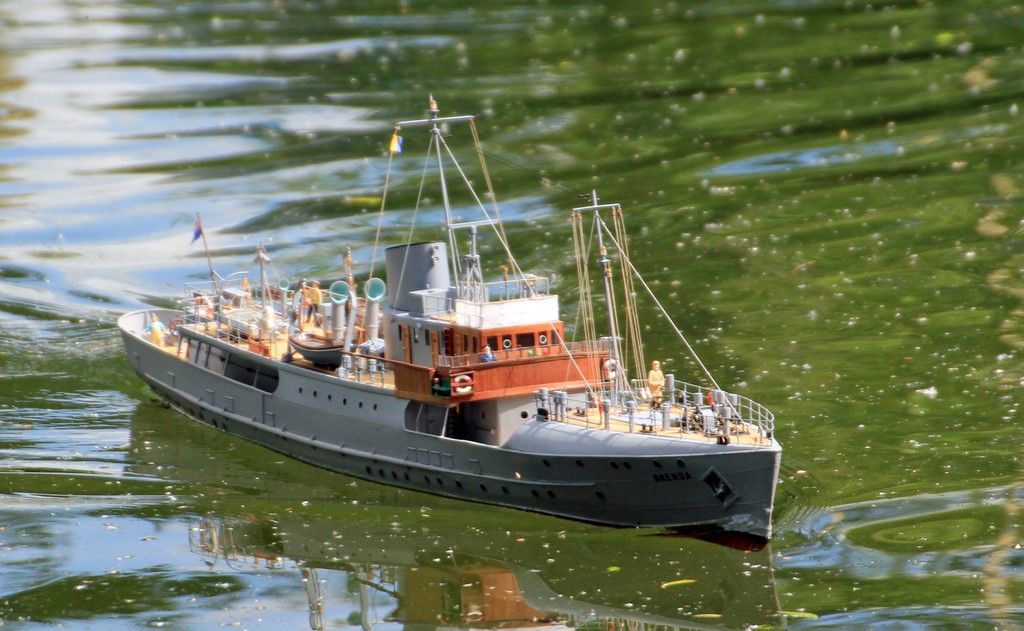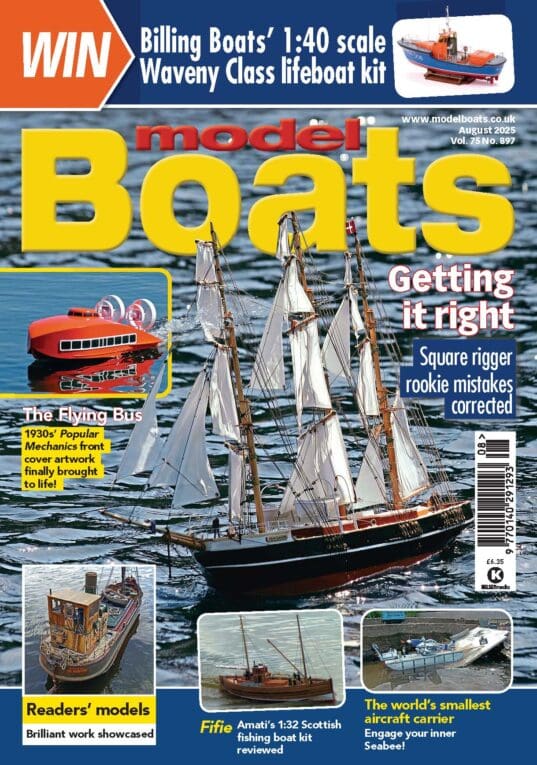Interesting Chris, but rather outside the scope of the intended article which is aimed at scale models.
I am presently building a 1:150 scale of the Aberdeen line passenger liner ss Miltiades of 1903 to 1:150 scale. I have some 1:1200 waterline drawings, some photos of the orignal plans taken in the National Maritime Museum last year plus a lot of photos taken of the builder's model which used to be displayed in the London Science Museum.
From the builder's model, the draught marks on the hull indicate that the three blade merchant style props are 15 feet in diameter. At 1:150 scale that would be pretty much 30mm on the model. Raboesch sell this type of propellor in this size so that is the back end of the model taken care of. (it's a scale model so it has to look right, no black plastic two bladers)
I am using a conventional brushed motor/NiMH battery setup as it is convenient, relatively inexpensive and will do the job. I know from experience that 280 size motors would struggle a bit with this size of prop and an M4 13 inch shaft. A 540/545 type would be overkill and too heavy so the sweet spot is a 385 low drain type which is fitted in many other models of this overall size and weight. I also know that a 7.2v battery would probably be OK but an 8.4v pack would give a bit of power in hand. After that the speed will be dependent on how far I push the throttle stick.So, for me, job done using empirical practical experience withput any need to enter into tests or calculations although I will check the current draw to confirm it is within reasonable limits.
Obviously the less experienced modeller, or one coming into the hobby (who is the target of the article) won't have that experience to draw on but he may be building one of the Deans Marine traditional merchant ships which have siimilar dimensions and could therefore fit a similar setup to mine in the reasonably sure knowledge that his model will perform similarly – and that is really all he wants to know.
A lot of the points made above are in fact made in the original article which explains pitch, blade area etc. etc. so that readers have a basic idea of the factors involved without having to reach for a calculator.
Colin
Edited By Colin Bishop on 18/09/2020 18:36:44





